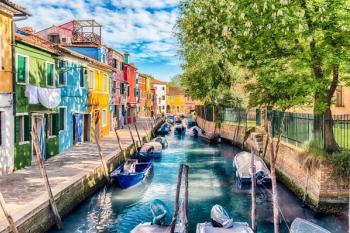
- Application Notebook-09-01-2012
- Volume 0
- Issue 0
Benefits of NexION 300 ICP-MS Technology for the Analysis of Power Plant Flue Gas Desulfurization Wastewaters
The US EPA wrote wastewater effluent limit guidelines for discharge permits granted to coal-fired power plants back in 1982, known as 40 CFR Part 423. However, the rule has not kept pace with changes in the industry over the past several decades. For that reason, the US EPA has revised the rule with new proposed revisions expected in November 2012 and the final rule expected by April 2014. To support the modification to this rule, the US EPA is developing a new ICP-MS method specifically for flue gas desulfurization wastewaters (FGDW).
The US EPA wrote wastewater effluent limit guidelines for discharge permits granted to coal-fired power plants back in 1982, known as 40 CFR Part 423. However, the rule has not kept pace with changes in the industry over the past several decades. For that reason, the US EPA has revised the rule with new proposed revisions expected in November 2012 and the final rule expected by April 2014. To support the modification to this rule, the US EPA is developing a new ICP-MS method specifically for flue gas desulfurization wastewaters (FGDW). The objective of this particular study was to investigate the capability of the NexION® 300 ICP-MS technology (PerkinElmer, Shelton, Connecticut) using the new draft US EPA procedure for FGDW.
Method Sample Preparation
Sample preparation was carried out as follows. A 10-fold dilution of FGDW samples were followed by an open-vessel digestion in a block digester according to US EPA Method 1638 — aqueous sample preparation — total recoverable metals — Section 12.2.1–12.2.7. The final acid concentration of samples, calibration standards, and blank was 2% HNO3 + 0.5% HCl.
Instrument Parameters
A NexION 300D ICP-MS, coupled with an SC-DX FAST (ESI, Omaha, Nebraska) automated sample delivery system, was used for the investigation. This intelligent delivery system is basically a rapid flow injection technique integrated into an autosampler, which significantly reduces the pre- and post-measurement times involved with delivering a new sample to and removing the previous sample from the ICP-MS. By optimizing these times, a significant improvement can be made in the sample throughput. As a result, the measurement time for three replicates was 1.5 min, and the total analysis time, sample-to-sample, was 2.5 min for the 22 isotopes monitored.
Conclusion
FGDW samples are among the most difficult samples to analyze by ICP-MS. The extremely high levels of sulfates, chloride, alkali/alkaline earth metals, and organic species in the sample can cause a multitude of problems. Some of these problem areas include very high concentrations of matrix components that produce severe sample transport effects, unless the necessary sample delivery steps are taken. In addition, the heavy matrix has the potential to cause serious signal drift by depositing material on the interface cones. The extremely high levels of carbon can also impact the ionization temperature in the plasma, leading to suppression or enhancement effects on the analytes of interest. And finally, the high chloride, sulfate, and carbon levels will generate ions in the plasma that combine with argon-, solvent- and acid-based species to produce severe polyatomic spectral interferences on many of the analytes.
Table I: MS-MSD and RPD data for real-world FGDW sample #2
For these reasons, it is absolutely critical that the analyst has all the necessary tools to minimize the effects of all these potential interferences. The investigation has shown that the NexION 300D ICP-MS has many of these advanced interference reduction tools to successfully analyze FGDW according to US EPA draft methodology. From the discrete, fast sampling, through the Triple Cone Interface to minimize drift, to the Universal Cell reducing or removing many severe spectral interferences, the system can generate a high-quality, stable signal over many hours of operation. And finally, the Quadrupole Ion Deflector allows for the maximum throughput of ions, while maintaining extremely low background levels. This study has demonstrated that the NexION 300D ICP-MS, coupled with an SC-DX FAST system, is ideally suited to cope with the analytical demands of this very difficult application.
You can download the full application and learn more about the benefits of the NexION 300 ICP-MS for FGDW analysis at
PerkinElmer, Inc.
940 Winter Street, Waltham, MA 02451
tel. (800) 762-4000 or (203) 925-4602
Website:
Articles in this issue
over 13 years ago
Expanded Spectral Range Germanium ATR Crystalover 13 years ago
Call for Application Notesover 13 years ago
Protein Stability by Chemical Denaturationover 13 years ago
Tissue Raman Measurement at 1064 nmover 13 years ago
Moxtek's ULTRA-LITE X-ray Sourceover 13 years ago
The Orbis Micro-XRF Analyzer Seriesover 13 years ago
EDXRF Analysis of Trace Elements in Aqueous Solution with UltraCarryover 13 years ago
FT-IR Contaminant Identification Using OMNIC? Specta SoftwareNewsletter
Get essential updates on the latest spectroscopy technologies, regulatory standards, and best practices—subscribe today to Spectroscopy.




